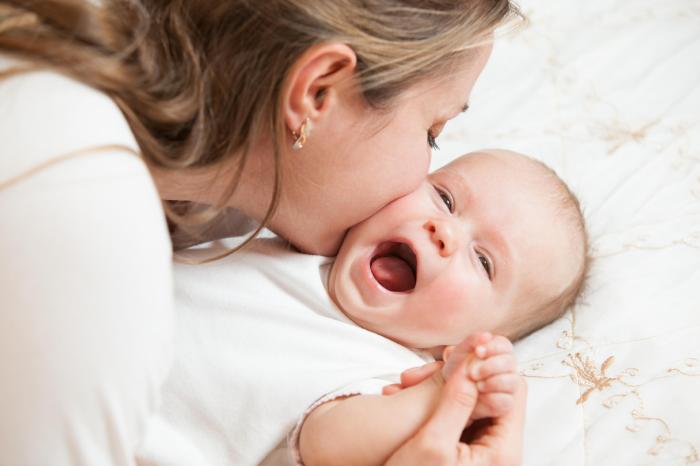My 3 Week Old Baby Is Always Red

If you prefer to listen to this article, click on the SoundCloud player below.
Your Baby's Skin
Many parents' first anxious questions relate to the appearance of their baby's skin. "Is my baby too red?" "What are those marks on his skin?" "Why does she have pimples?" Here are some things you may discover about your baby's skin:
- Skin color: Skin color in newborns can vary greatly — from a pink and white or yellowish tone to the typical redness. Even from one moment to the next, skin color can vary depending on the activity level of the baby. Of course, family characteristics and racial factors will also influence the color of your baby's skin. At birth, the skin of the normal newborn is reddish-purple in color and turns bright red when the baby cries. (During the first few days of life, the skin gradually loses this redness.) In addition, the newborn's hands and feet may be cool and blue. By the third day, he may also appear slightly yellow. This condition is called jaundice. It is common in newborns, and only occasionally requires special treatment.
- Rash: Your infant's tender and sensitive skin commonly reacts to his new environment. Scattered, pinhead-sized, or somewhat larger papules (pimples) surrounded by a mild red zone may appear in various areas of the body when your baby is about 2 days old. These will disappear over time. The cause is unknown, and the rash requires no treatment.
- Acrocyanosis: A blue color of the hands and feet is called acrocyanosis. It is caused by a decrease in the circulation of blood to the skin of the hands and feet. This condition frequently occurs during the early hours of life. However, a baby should never be blue around the face and lips. If you notice that your baby's face and lips have a blue color, or if she has dusky or blue skin, this may indicate a serious problem and requires immediate medical attention.
- Mottling: A new baby's skin can also look blotchy or mottled. This is especially noticeable if the baby is uncovered or cold. Mottling can also occur if your baby is ill. If your baby's skin color becomes pale or mottled, take her temperature. If it is higher or lower than the normal range, all your baby's doctor.
- Cradle cap: Cradle cap is a scaly patch of skin that develops on the scalp. Brushing your baby's hair daily and washing it frequently — every time you bathe him, or two to three times per week — may help prevent cradle cap. If cradle cap occurs, call your baby's doctor.
- Milia: The whitish, pinhead-size spots, mainly on and around the nose or the newborn's chin, are called milia. Although they appear as tiny pimples, it is important not to disturb or break them, or put acne medication on them. Doing so could produce a rash or cause the skin to scar. Milia are normal in newborns and usually disappear within a few weeks.
- Stork bite marks: This is a fanciful term for the areas of pink or red often present in the newborn on the upper eyelids, forehead, and back of the neck. These marks are caused by blood vessels that are close to the surface of the skin. They usually fade by the end of the baby's second year. These "birthmarks" occur in as many as half of all newborns, especially in those with fair complexions.
Proper skin care for your newborn
A baby's soft and delicate skin needs special care. Using skin care product made specifically for babies is a great place to start, but your baby's doctor can advise you about other products. Products for adults may be too harsh for a baby and may contain irritants or allergens.
The first thing many adults do after a shower or bath is apply lotion, but for the most part, this is unnecessary for babies unless the baby's skin is dry. Powders should be avoided, unless they are recommended by your baby's doctor. When using any powder, put the powder in your hand and then apply it to the baby's skin. Shaking powder into the air releases dust and talc which can harm your baby's lungs.
Laundry detergents may cause irritation to a baby's delicate skin. If your baby seems sensitive to detergent, you can use a special detergent for babies with sensitive skin and give the laundry an extra rinse with plain water to remove any leftover detergent.
My 3 Week Old Baby Is Always Red
Source: https://intermountainhealthcare.org/blogs/topics/intermountain-moms/2016/02/what-your-babys-skin-is-telling-you/
0 Response to "My 3 Week Old Baby Is Always Red"
Post a Comment